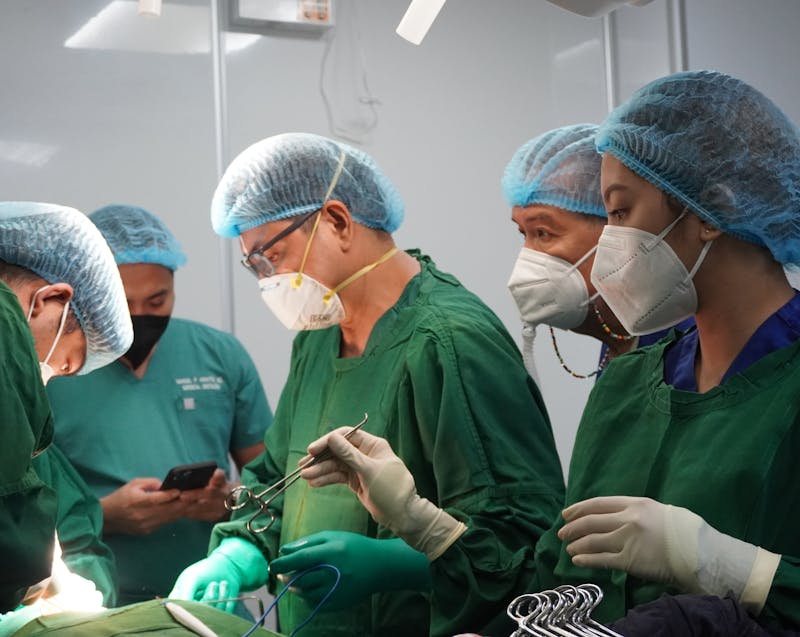
- Medical malpractice happens when a doctor or other healthcare professional provides treatment that falls below the accepted medical standard, resulting in injury or harm to the patient.
- Common examples include misdiagnosis, surgical errors, medication mistakes, birth injuries, and anesthesia errors.
- Not all medical errors qualify as malpractice—proof of negligence and resulting harm is essential.
- Documentation and expert medical opinions are critical when building a malpractice claim.
- Understanding how medical malpractice differs from negligence helps patients recognize when legal action may be justified.
- Staying informed empowers patients to protect their rights and ensure they receive proper medical treatment.
When we seek medical attention, we place our confidence in doctors, nurses, and other healthcare professionals to deliver safe and competent care. Yet, even the most reputable hospitals and practitioners can make mistakes. While not all medical errors are considered malpractice, some lapses in judgment or procedure can result in severe and lasting harm. Medical malpractice happens when a healthcare professional fails to meet the recognized standard of care, causing a patient’s condition to worsen or leading to injury or death.
By understanding what constitutes medical malpractice, patients can better identify when their care may have crossed the line from an honest mistake to a legal violation. This article highlights the most common types of medical malpractice that every patient should be aware of, providing insights to help you recognize warning signs and take the right steps to protect your health and legal rights.
1. Misdiagnosis or Delayed Diagnosis: When Timing Means Everything

One of the most frequent types of medical malpractice is misdiagnosis or delayed diagnosis. When a doctor fails to accurately identify a patient’s condition, the result can be devastating. A delayed or incorrect diagnosis often means that crucial treatment is postponed—or worse, that unnecessary or harmful treatments are administered.
For example, a patient showing symptoms of a heart attack might be misdiagnosed with indigestion and sent home without proper care. Similarly, a cancer patient might not receive timely treatment if their condition is initially dismissed as something minor.
Common reasons for diagnostic errors include:
- Failure to order the correct tests.
- Misinterpretation of test results.
- Dismissing patient symptoms or medical history.
In such cases, the key question is whether another competent doctor would have made the same mistake. If not, it may qualify as malpractice.
2. Surgical Errors: Mistakes That Should Never Happen
Surgery always carries risk, but some surgical mistakes are considered preventable and fall under medical malpractice. These are known as “never events”—incidents that should never occur in a properly functioning medical system.
Examples of surgical malpractice include:
- Operating on the wrong body part or the wrong patient.
- Leaving surgical instruments or sponges inside the body.
- Causing nerve damage or excessive bleeding due to inattention.
- Performing unnecessary or incorrect surgical procedures.
Even minor surgical errors can have long-term consequences, such as chronic pain or permanent disability. When these errors result from negligence or poor communication among surgical staff, they may form the basis for a malpractice claim.
3. Medication Errors: The Hidden Danger in Prescriptions
Medication mistakes are another widespread form of medical malpractice that often goes unnoticed until severe harm occurs. A doctor, nurse, or pharmacist can make an error at any stage—from prescribing and dispensing to administering the drug.
Typical examples include:
- Prescribing the wrong medication or dosage.
- Failing to check for drug interactions or allergies.
- Mislabeling medication containers.
- Giving the wrong patient the wrong drug.
These errors can cause severe allergic reactions, organ failure, or other life-threatening complications. Healthcare professionals have a duty to verify prescriptions carefully and ensure that patients understand their treatment plan.
4. Birth Injuries: When Medical Negligence Affects the Most Vulnerable

Childbirth should be a joyous moment, but when medical errors occur during pregnancy or delivery, the results can be tragic. Birth injuries often happen due to improper monitoring or delayed responses to complications.
Common examples of medical malpractice during childbirth include:
- Failure to detect fetal distress.
- Improper use of delivery tools like forceps or vacuum extractors.
- Neglecting to perform a necessary C-section.
- Administering incorrect medication during labor.
Such mistakes can lead to severe outcomes such as cerebral palsy, brain injury, or physical trauma to the infant. In some cases, mothers also suffer preventable injuries due to negligent care. Recognizing these examples helps families hold responsible parties accountable.
5. Anesthesia Errors: The Risks of Being Under Sedation
Anesthesia is an essential part of many medical procedures, but errors in dosage or monitoring can have fatal consequences. An anesthesiologist’s role is to ensure that a patient remains safely sedated and stable throughout surgery.
Examples of anesthesia malpractice include:
- Administering too much or too little anesthesia.
- Failing to check for potential drug allergies.
- Not monitoring vital signs during surgery.
- Allowing the patient to wake up mid-procedure (anesthesia awareness).
Because anesthesia errors often occur while a patient is unconscious, it may take time for victims or families to realize what went wrong. Documentation and expert reviews often play key roles in proving such malpractice cases.
6. How Does Medical Malpractice Differ from Negligence?
While the terms “medical negligence” and “medical malpractice” are often used interchangeably, they’re not exactly the same. Negligence refers to a mistake or oversight that causes harm, even if it wasn’t intentional. Medical malpractice, on the other hand, occurs when that negligence involves a breach of professional duty or standard of care by a licensed healthcare provider.
For instance, if a nurse forgets to record a patient’s allergy and the patient suffers a reaction, that may be negligence. However, if a surgeon deliberately ignores test results and proceeds with a risky procedure, that’s malpractice. Understanding how medical malpractice differs from negligence is essential for patients considering whether to pursue a legal claim.
Final Thoughts: Knowing Your Rights as a Patient
Recognizing common examples of medical malpractice empowers patients to take action when something goes wrong. While not every medical error is intentional, the law exists to protect those who suffer harm due to substandard care. If you suspect malpractice, document everything—medical records, communications, and witness accounts—and consult an experienced medical malpractice attorney.
Awareness is your first line of defense. Knowing what to look for helps ensure that you and your loved ones receive the safe, ethical, and professional care you deserve.

